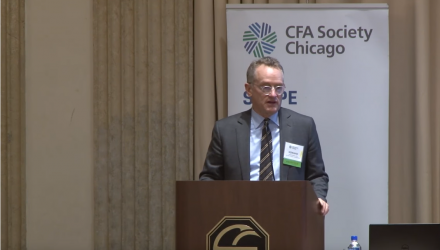A interview with billionaire debt investor and founder of Oaktree Capital Management, Howard Marks. In this interview, Howard discusses how to invest in a low return world and the relationship between risk and return. Howard also talks about when to invest aggressively and defensively.
Howard Marks: Investing In A Low Return World
Transcript
I’m here to talk to you today my host and an I selected a presentation that I’ll use to kick off today’s session entitled Investing in a low return world and hopefully you might find some of that interesting and hopefully it’ll set the scene for some good. Q and A to follow and we will have time so I hope you’ll all work on your questions while we speak. What has been the dominant characteristic of the financial environment over the last 10 years. And the answer is low interest rates generally speaking. I mean the all time lows of interest rates were hit during that period and interest rates while having been raised in recent years are still extremely low. The impacts of that is to raised about the discounted cash flow of most businesses to increase the value of businesses to provide a wind at the back of many businesses to encourage economic results. All those things. That’s why the central banks of the world lowered interest rates 10 plus years ago to fight the global financial crisis. And of course it did work. But that has left us with an investment Viron characterized by low interest rates and that’s the reason for talking about them today. So I’ve been saying for some time I still believe that today the uncertainties are unusual in terms of number scale and in solubility things like geopolitics et cetera.
The perspective returns in many asset classes are historically low because of the low interest rate environment asset prices range from full to high depending on which asset category you’re talking about and pro risk behavior is widespread. They taught me at Chicago 50 years about go about the importance of risk aversion in terms of causing the positive correlation between risk and return and that when people are risk averse they’ll do thorough due diligence and the market will be a safe place. But sometimes they forget to do that. They engage in pro risk behavior and the environment becomes more risky. The bottom line I think has been and is that we’re living in a low return high risk world. Some of the environmental indicators over the last couple of years include the tenth year of an economic recovery the longest bull market in history. The ascendant super stocks the Fang’s strong demand for corporate credit money flows into emerging market debt record fund raising for private equity the onrush of capital for tech and VC investing and interest in crypto currencies. And I think that these are the important hallmarks of the last couple of years. And what do they mean. We were talking about that before right. What does that mean. What it means to me is that the markets over the recent years have been shaped by optimism trust in the future faith in investing and investors. A low level of skepticism and risk tolerance not risk aversion. So the first question is do you agree. You should ask yourselves. This guy knows what he’s talking about or is he exaggerating or has he left out a bunch of things to color his presentation. These are the things that I think are reflected in these things.
These things have to be present for these things to happen in my opinion.
A point my point is that attributes like these do not contribute to a positive climate for prospective returns and risk the increase of optimism the increase in risk tolerance the low level of skepticism contribute to asset appreciation. But of course that asset appreciation does not render the world safer. We have to be cognisant of that. Why are prospective returns low. The again it’s Chicago it all starts here in Chicago for me back in sixty seven and I learned about the capital market line. And it begins over at the left with the risk free rate with zero risk and it proceeds up into the right to offer investors a potential risk premium as an incentive for bearing incremental risk. That’s how the market works. Now I’m going to take a minute out since I think I have plenty of time today to say you asked most people what does this slide mean.
For more market trends, visit ETF Trends.
